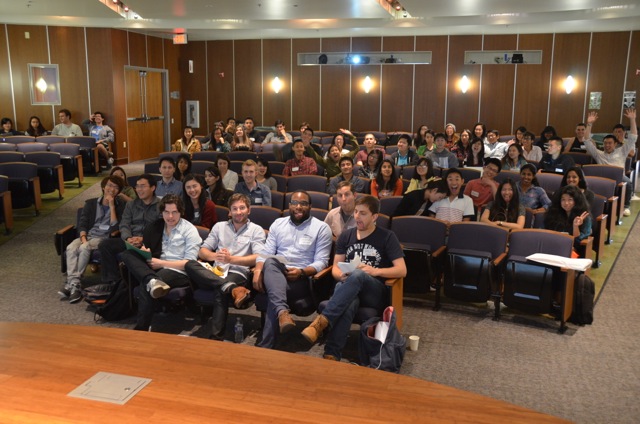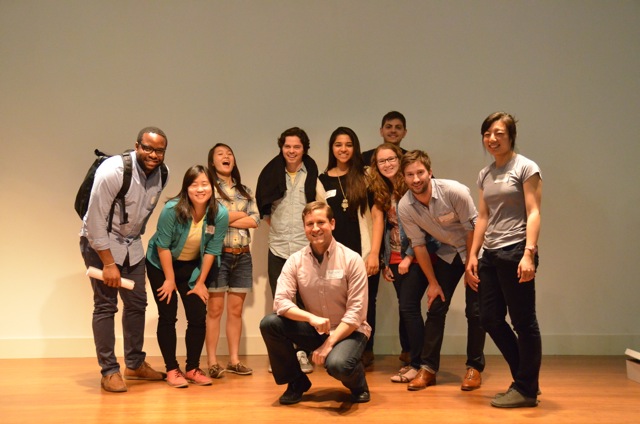What I learned from hosting a designathon
This past Saturday, Berkeley Innovation hosted a designathon in partnership with Google, specifically the Google+ Design Team. We had an awesome design challenge (time travel! space travel! time and space travel!), nearly 70 attendees and 18 amazing submissions at the end of the event.
 Looking forward to the presentations
Looking forward to the presentations
As it was my first time helping to host a designathon/an event this large, I learned a lot from the experience.
- More time should be permitted for team formation, especially for group introductions when teams are formed on-the-spot at the event.
- Time should be allotted to explain the design process, especially because the designathon is opened up to anyone, and novice designers are welcomed.
- Stacks of post-it notes should be separated into halves before the start of the event in order to maximize reach of the stickies to all teams.
- Students don’t always know how to best utilize the design mentors without guidance in the kind of feedback they should ask for.
- Create a #hashtag before the event begins if you want people to use it on social media.
- Critique sessions need to be more of a feedback round instead of a preliminary judging session.
- Teams must be in groups of four in order to cut down on number of teams and be able to improve on things such as a critique session taking too long.
- Having participants help clean up the rooms at the end of the design session but before the presentations is a wonderful idea, and also provides the judges extra time to go over submissions.
- Find the best way to get people’s attention in order to let them know how much time they have left throughout a design presentation.
- You will be amazed by the creativity and diversity of all the projects designed in only a six-ish hour time period. You will also wish many of these products actually existed.
- It is important to have the presentation technology set up beforehand. Good tip from today: Use two computers, one to present and one for those on-deck.
- Make sure both lo-fi and higher fidelity prototypes/presentations get an equal shot in the competition. Or, have a prizes for higher fidelity and a separate prize for lower fidelity projects.
 Berkeley Innovation event organizers and the Google+ Design Team
Berkeley Innovation event organizers and the Google+ Design Team
Thank you to Google for being amazing designathon partners, and to all the attendees, both design experts and design novices, who came out and stretched their imaginations. I can’t wait to take all we learned as organizers and put on an even better designathon next year.
